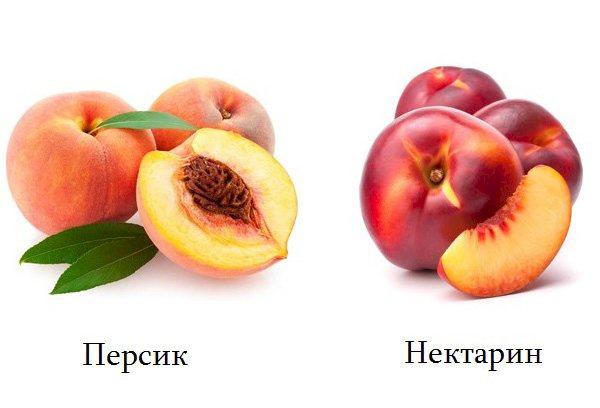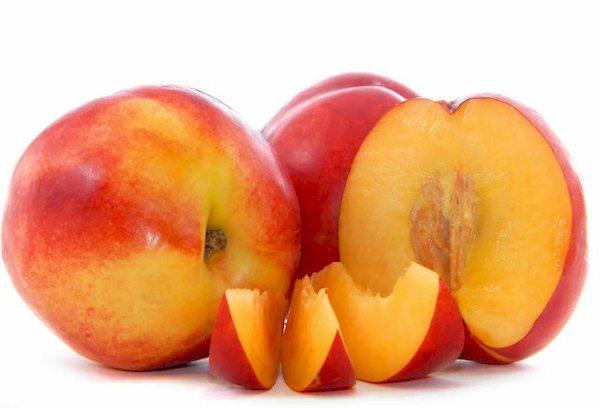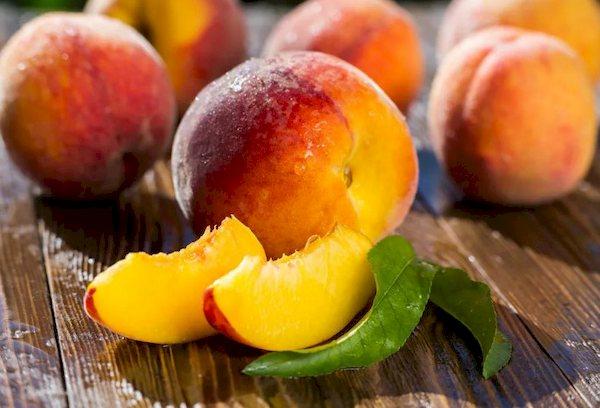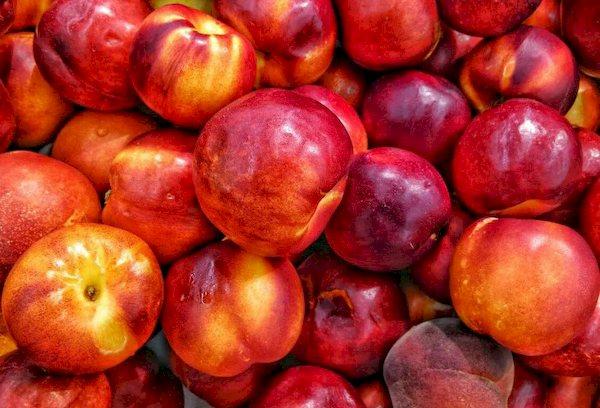What is the difference between a peach and a nectarine: countries of origin, appearance and nutritional value
Not all fruit lovers understand how a peach differs from a nectarine besides the name and some external differences. Both are stone fruits with tender and juicy flesh, but that's about the only similarity. And the difference lies in many factors - from regions of growth to nutritional value.
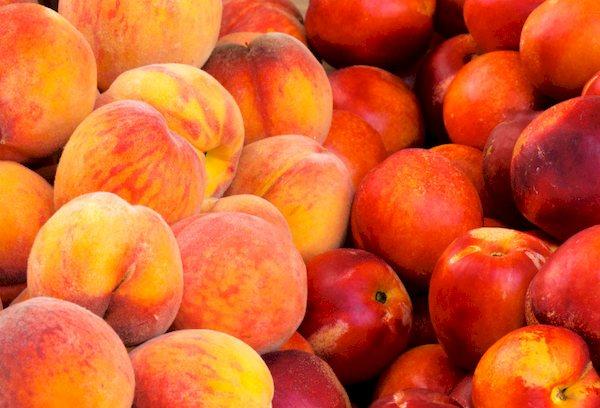
How to distinguish a peach from a nectarine
Before moving on to the differences, it is necessary to dispel the popular myth that nectarines are bred artificially, by crossing a peach with a plum or cherry plum. The fruit has a natural, natural origin and is a type of peach. The first mention of it dates back to the early 1600s, when peach trees began to develop fruits with smooth rather than hairy skin. This occurred as a result of mutations during selfing.
That is, in a certain sense, nectarine is a kind of anomaly, a “joke” of nature. And, given its origin, it is advisable to compare it not with the peach as such (because nectarine is also a peach), but with the common peach variety.
The fruits differ in the following characteristics:
- Countries of origin. Peaches are distributed mainly in regions of America and Eurasia, where the climate is warm or temperate. And the main suppliers of nectarines are the Mediterranean countries - Greece, Tunisia, Italy, Israel, Cyprus.And also “bald” fruits come to the world market from Bulgaria, China, the Czech Republic and the UK.
- Skin. In addition to the fact that the skin of a peach is covered with small fibers, which nectarines do not have, the difference lies in its elasticity and strength. Hairy fruits are easier to damage, making them more difficult to transport. “Naked” fruits have thicker skin and are better able to withstand transportation.
- Pulp. Peaches differ from nectarines in that they are soft and juicy inside and easily crush when squeezed. And the inside of smooth fruits is denser and more uniform, without discernible fibers.
- Smell and taste. Ripe nectarines have a faint odor, while peaches exude a bright, sweet aroma. If there is no smell coming from “hairy” fruits, they are most likely underripe. There are disputes among consumers about the taste, but still many varieties of nectarines are sweeter than their “ancestors”.
- Nutritional value. Since peaches and nectarines are closely related, they have a similar composition. But “bald” fruits are superior in calorie content and sugar content. In addition, they are richer in phosphorus, copper, iron, vitamins B, C, E and PP.
Nectarines also have a longer shelf life, while ripe peaches spoil very quickly. For this reason, “shaggy” fruits intended for transportation over long distances are picked unripe.
Peach
Peaches, or as they were called in earlier times, “Persian apples,” depending on the variety, can have straw, yellow, yellow-red, orange, pink and even burgundy skin. The pulp is usually yellow, sometimes whitish.
In addition to nectarines, there are many more varieties of peaches, which are divided into the following categories:
- real ones - with fleecy skin, tender pulp and an easily separated stone;
- pavvi - “hairy”, the inner part is soft, the bone is difficult to separate;
- klings - the flesh is gristly, the bone does not separate;
- Brugnons are pubescent, flattened in shape, with a soft inner part.
Almost all types of fruits are suitable for consumption in their natural form, for making juices and juice-containing drinks, preserves and jams, and are also added to desserts and baked goods. The exception is klings - these fruits are almost never eaten fresh, mostly used for canning.
Nectarine
Nectarines are not much different from peaches in the variety of skin colors. But more often these fruits still have a bright, reddish color.
To date, more than 500 varieties of these fruits have been bred. Conventionally, they are divided into 2 large groups, depending on the type of flowers:
- large rose-shaped;
- campanulate.
Despite the fact that nectarines have been common in Western Asia, England and Europe for several centuries, in Russia the fruit began to gain popularity only at the end of the 20th century. And later, domestic scientists developed several winter-hardy species, which are currently grown in the North Caucasus and the Volgograd region.
Just like the “shaggy” ones, the “bald” fruits are suitable for consumption fresh and canned, are included in various desserts and are used in the manufacture of drinks, marmalade and jam.
When choosing peaches and nectarines, you need to pay attention to the same signs. High-quality fruits have intact skin without spots or dents, are elastic, although slightly pressed when pressed, and exude a pleasant, sweetish aroma.
